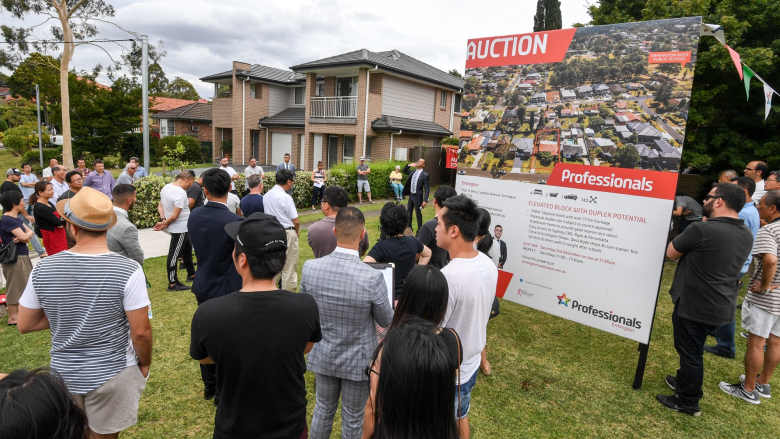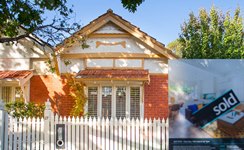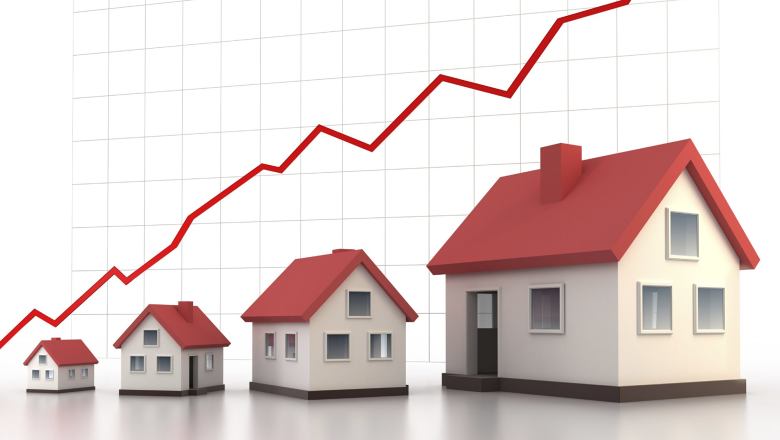Post to SinFongChanRE.wix on 31/1/2018 at 11:26 PM
Commenting on “Hobart home prices grow 173 percent over the year to December”
https://www.domain.com.au/news/victorian-government-to-copurchase-houses-with-400-firsthome-buyers-20180124-h0no16/
The first statement in the Wikipedia in reference to Australian Dream is "... a belief that in Australia, home-ownership can lead to a better life and is an expression of success and security." This is not just an Australian Dream or the Great Australian Dream, but also a dream of many people in various countries, including the Americans and Asians.
In most cases, one needs plenty of money to fulfil the dream. The initial amount of money comes in the form of loan from a bank or a non-bank financial institution, known as the lender. A lender will only pay attention to a borrower if they have a reasonable reliable source of income as well as having certain amount of money that goes towards the purchase price of the house.
I have been advising my readers to "save, save and save" just like their parents or grandparents would have said thousands of times to them, "work hard and save up for a house". Not many people are born with a silver spoon, and therefore in order to raise the initial deposit for the first-home, many things have to set in motion.
During the time I purchased my first house, my wife and I had to raise 40% of the price of the house, and the bank lent me the rest of the 60%. For a house around $28,500, the required amount to raise was $11,400. It might seem very little by today's standard, but that amount was the value of that time, and my first permanent job after graduation was $5,200, just half of the deposit.
It must be noted that this deposit referred here is not the same 10% deposit paid to a vendor/seller of the house when a buyer signs on the dotted line of the contract of sale.
The percentage of the purchase price or valuation of the property that the bank lent is known as Loan to Value Ratio or LVR. New Zealand and Australia use the term LVR, while the US and UK use LTV which stands for Loan to Value.
In the past few years, property prices were so hot that they exceeded the fair valuation. If the purchase price is different to the valuation then the lender will use the lower of the two to determine the LTV ratio. For example, if a house is sold for $900,000, say at least $100,000 above the market expectation or official valuation, due to the buyers wanting to live close to their children and grandchildren, the LVR (or LTV) will be based on $800,000 instead of $900,000.
The larger the LVR or LTV, the greater the amount the lender will "contribute" towards the purchase of the property. In other words, the lender faces a higher risk that the borrower may default in tough times. The term default means failure to fulfil an obligation, namely, repay a loan. In short, it is better for the lender and borrower if the ratio is smaller in number.
To protect the lender against the risk of not recovering the full loan, lenders require the borrowers take up Lender Mortgage Insurance (LMI) if the LVR is more than 80%. LMI is imposed upon the borrowers, but does not protect the borrowers or repay anything to the lender in case of default.
LMI can go up to about 2% to 2.5% of the loan amount plus stamp duty. This is added to the loan, and interest payment is calculated based on the total amount.
So, what is the ballpark figure that you need to save up before approaching a lender? Most banks will not lend buyers with less than 20% of own contribution, also known as Equity. However, some banks and financial institutions are prepared to offer loans to buyers. It seems obvious from the above explanation that it is best to have 20% or more so as to avoid outlaying the LMI.
What if you can afford, say only 5% for the deposit but find it difficult to rise the rest of 15%? Should you just raise your hands in the air and call for help, hoping a miracle to descend upon you?
In a very hot real estate market, the properties in your price range increase in value by much more than the cost of the insurance. The property prices may have increased by more than 10% if you wait a few extra months to save additional money to avoid paying LMI, which costs an extra 2% to 2.5%.
Conversely, in a market situation like present when property prices are stable or on a downward slide, saving extra money to top up the initial deposit is a wiser choice.
Thank you for reading
Commenting on “Hobart home prices grow 173 percent over the year to December”
https://www.domain.com.au/news/victorian-government-to-copurchase-houses-with-400-firsthome-buyers-20180124-h0no16/
The first statement in the Wikipedia in reference to Australian Dream is "... a belief that in Australia, home-ownership can lead to a better life and is an expression of success and security." This is not just an Australian Dream or the Great Australian Dream, but also a dream of many people in various countries, including the Americans and Asians.
In most cases, one needs plenty of money to fulfil the dream. The initial amount of money comes in the form of loan from a bank or a non-bank financial institution, known as the lender. A lender will only pay attention to a borrower if they have a reasonable reliable source of income as well as having certain amount of money that goes towards the purchase price of the house.
I have been advising my readers to "save, save and save" just like their parents or grandparents would have said thousands of times to them, "work hard and save up for a house". Not many people are born with a silver spoon, and therefore in order to raise the initial deposit for the first-home, many things have to set in motion.
During the time I purchased my first house, my wife and I had to raise 40% of the price of the house, and the bank lent me the rest of the 60%. For a house around $28,500, the required amount to raise was $11,400. It might seem very little by today's standard, but that amount was the value of that time, and my first permanent job after graduation was $5,200, just half of the deposit.
It must be noted that this deposit referred here is not the same 10% deposit paid to a vendor/seller of the house when a buyer signs on the dotted line of the contract of sale.
The percentage of the purchase price or valuation of the property that the bank lent is known as Loan to Value Ratio or LVR. New Zealand and Australia use the term LVR, while the US and UK use LTV which stands for Loan to Value.
In the past few years, property prices were so hot that they exceeded the fair valuation. If the purchase price is different to the valuation then the lender will use the lower of the two to determine the LTV ratio. For example, if a house is sold for $900,000, say at least $100,000 above the market expectation or official valuation, due to the buyers wanting to live close to their children and grandchildren, the LVR (or LTV) will be based on $800,000 instead of $900,000.
The larger the LVR or LTV, the greater the amount the lender will "contribute" towards the purchase of the property. In other words, the lender faces a higher risk that the borrower may default in tough times. The term default means failure to fulfil an obligation, namely, repay a loan. In short, it is better for the lender and borrower if the ratio is smaller in number.
To protect the lender against the risk of not recovering the full loan, lenders require the borrowers take up Lender Mortgage Insurance (LMI) if the LVR is more than 80%. LMI is imposed upon the borrowers, but does not protect the borrowers or repay anything to the lender in case of default.
LMI can go up to about 2% to 2.5% of the loan amount plus stamp duty. This is added to the loan, and interest payment is calculated based on the total amount.
So, what is the ballpark figure that you need to save up before approaching a lender? Most banks will not lend buyers with less than 20% of own contribution, also known as Equity. However, some banks and financial institutions are prepared to offer loans to buyers. It seems obvious from the above explanation that it is best to have 20% or more so as to avoid outlaying the LMI.
What if you can afford, say only 5% for the deposit but find it difficult to rise the rest of 15%? Should you just raise your hands in the air and call for help, hoping a miracle to descend upon you?
In a very hot real estate market, the properties in your price range increase in value by much more than the cost of the insurance. The property prices may have increased by more than 10% if you wait a few extra months to save additional money to avoid paying LMI, which costs an extra 2% to 2.5%.
Conversely, in a market situation like present when property prices are stable or on a downward slide, saving extra money to top up the initial deposit is a wiser choice.
Thank you for reading







